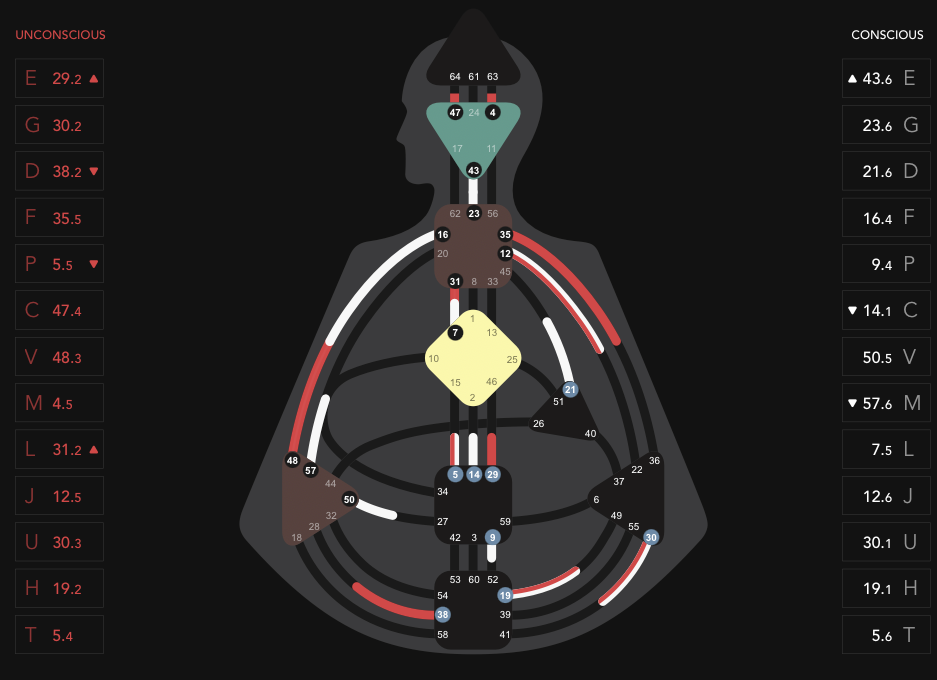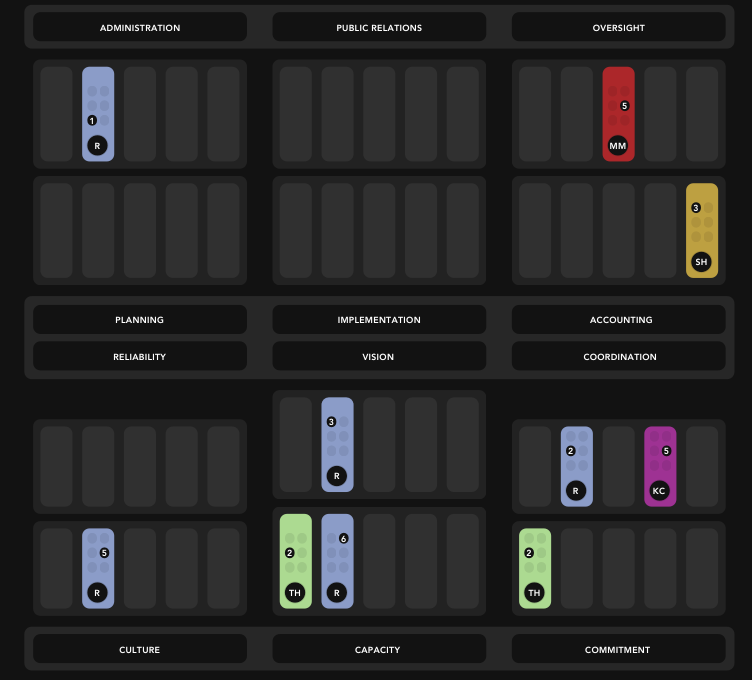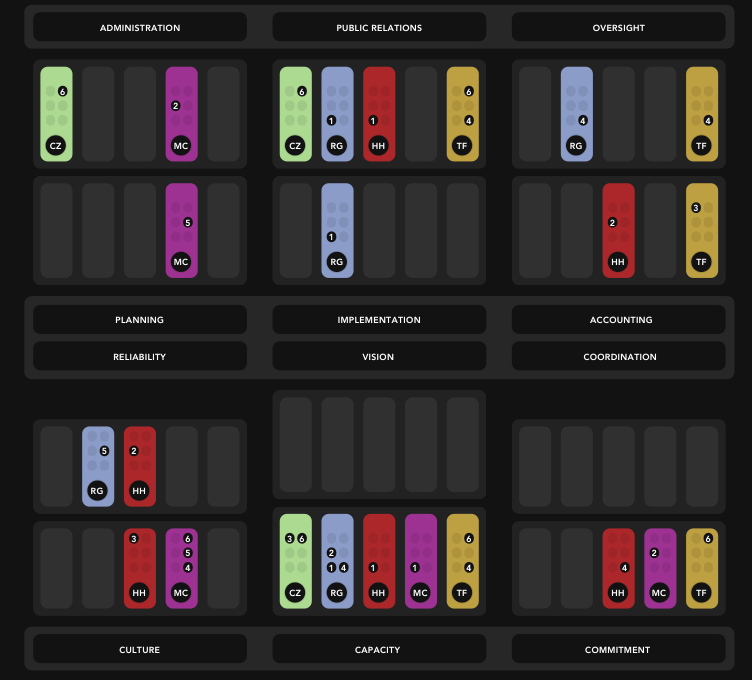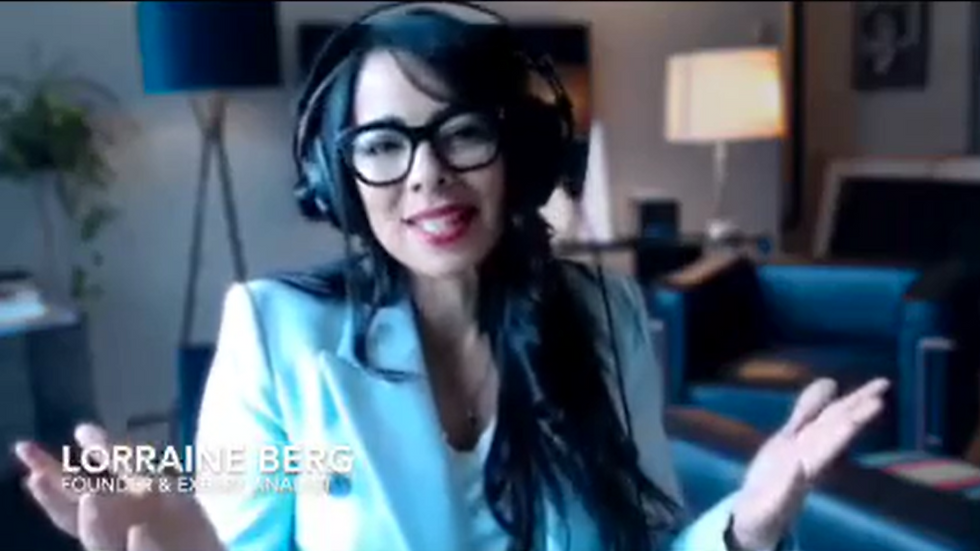A Business Owner’s Health Crisis Became the Catalyst for Legacy Leadership
- Lorraine Berg
- Aug 6
- 5 min read
Updated: Nov 6
Case Study Snapshot:
Client Profile: Established business owner with nearly 20 years in operation; Emotional Classic Builder type (BG5) with OC16 strength (50-27)
Team: 11 employees across two shifts (two small unified groups), a mix of tenured and newer staff
Primary Challenge: Health crisis (toxic mold) prevented the founder from being physically present in the business; no manager in place; unclear delegation structure; considering closing the business
Key Insight: The founder was built to manage and maintain a large organization but lacked aligned delegation systems. Her daughter (an Advisor type) filled a key leadership/managerial gap, and internal leadership potential was activated across the team
Business Goal: Continue managing the business while caring for health, and scale sustainably with operational clarity. Evolve into larger OC16 structure.
HCW Intervention: Full Leadership & Business Analysis signature pathway, Small unified group realignment, communication strategy development, succession planning, emotional intelligence coaching, and role redefinition
Outcome: Established internal management structure, delegated operational authority, hired additional employees within 1 year, expanded community presence, and founder transitioned into the role of Director of Training & Education, developing her team and supporting the business through mentorship and creative contribution.
Core Lesson: When leadership is redefined through design, not default, founders can scale without sacrificing their health. With the right people in the right roles, supported by clear systems and aligned communication, sustainable growth becomes not only possible but inevitable.
Introduction
After nearly two decades of running a thriving service-based and retail business model, a respected founder reached a sudden and painful crossroads. Her health was deteriorating by the discovery of a severe toxic mold allergy. Once the diagnosis and environment was confirmed (the commercial property), the complications continued when the medical advisors suggested she could not be in the business while in treatment. With no manager in place and a team of 11 relying on her presence, she faced a question no founder wanted to answer: Can the business survive without me in it? Can I take the time to focus on my health recovery?
With a long-standing, loyal team and a deep love for her work, she didn’t want to close the doors. But without the clarity of how to delegate, structure operations, or lead from a distance, she felt unsure of how to continue. Running a business for 20 years with her presence and now all of that was being challenged by her health. That’s when she reached out to Human Centered Workplaces. Together, we explored what was possible, not just for the business, but for her role within it.
The Challenge
This founder had built a company with heart, integrity, and a solid foundation. She was extremely passionate about her work and giving back to her community. Her team was tenured and talented, many had been with her for years. But like many leaders, she had never truly developed a management structure because she had always been in the business, not just leading it. Her identity was closely tied to her daily presence, and when that was removed, the entire system felt at risk.
Without a manager or delegation framework, she was doing it all herself. And now, she couldn't. Her health required her to step back but her belief was that stepping back meant giving up. She needed a new model of leadership, one that didn’t depend on constant physical presence, but instead on structure, trust, and clearly defined roles.
The HCW Process
Our work began with a Full Leadership & Business Analysis, Human Centered Workplaces’ signature program designed to bring precision, sustainability, and clarity to both leadership roles and organizational structure. This is a comprehensive business transformation process.
In Phase One, we focused on the founder’s individual leadership design. Her BG5 chart revealed she is a Classic Builder with OC16 strength, naturally built to manage, maintain, and scale large organizations in a responsive, step-by-step way. While fully capable of leading this business, her design made it clear that she wasn’t meant to carry it alone or through overexertion. Long-term success required the right support system and clearly defined structure.

In Phase Two, we conducted the Business Analysis. We identified several structural gaps. The business operated with two distinct shifts, but without a clear throughline of management between them. A small internal training program already existed, but operational cohesion was lacking.
During this analysis, a pivotal insight emerged. The founder’s daughter, a recent business graduate who had been helping part-time, joined the conversation. Her BG5 analysis revealed an Advisor leadership style, strategic, guiding, and naturally equipped to lead teams and develop talent. She was the missing link in the company’s internal leadership framework. Since there was no manager, this became an opportunity to develop her skills to take that position. Her presence filled the gaps, unifying the shifts and relieving her mother of day-to-day management of team operations.

Phase Three focused on implementation. After a few months with the new leadership structure in place, we introduced targeted communication strategies and refined team roles. Rather than bringing in external hires, we activated existing leadership potential within the company. Employees were reassigned projects based on their natural skills, allowing both shifts to function more cohesively under the Advisor’s guidance.
A deeply affirming realization also came forward: the founder, a lifelong educator at heart, had always dreamed of leading training and development. With her daughter stepping into a formal managerial role, she was finally free to transition into the position of Director of Training & Education, mentoring her team, developing educational content, and showing up in the business periodically in a role that truly lights her up. By design, this was the fullest expression of her Oc16 strength in action.
This shift allowed her to lead in a more aligned, sustainable way, not from guilt or obligation, confusion or chaos, but from purpose and satisfaction now fully knowing what her contributions are to the development of her business. Her presence became intentional, her energy more protected and aligned, and her inspirational impact even more powerful. She now supports her business not by managing every piece, but by contributing where she’s most effective, building people, strengthening culture, and honoring her legacy.


Implementation and Outcome
The shift was gradual but profound. Transformation is not a quick process. With role clarity, trust in her team’s design, and new leadership systems in place, she began to see a path forward, one that didn’t require sacrificing her health to stay involved. She restructured her leadership model, appointed key team members to take on operational authority, and began managing the business from a distance as she worked on supporting her health.
What followed was a breakthrough: her team didn’t just maintain the business, they elevated it. Community outreach expanded, visibility increased, and team culture improved. Within the year of working together, she hired additional employees, reaching her targeted growth goals while continuing her health recovery.
She now has a fully operational internal management framework, is executing a succession plan with trusted team members, and is able to lead remotely with clarity and consistency. What once felt like an impossible decision became an empowering transformation, both personally and professionally.
Reflections on the Science
This case beautifully illustrates how the Science of Differentiation supports not just growth, but sustainability. The business didn’t need a hero, it needed a structure that honored how people were designed to lead and contribute. By understanding her Classic Builder design, and activating the talents already embedded within her team, this founder created a thriving model of distributed leadership.
The lesson? When leaders understand their energetic limits and delegate with intention, businesses don’t fall apart, they grow stronger. This founder didn’t step away, she rose into a new role. One that now allows her to scale the business, steward her team, and preserve her well-being.
At Human Centered Workplaces, we believe this is what legacy leadership looks like: built on design, trust, and aligned authority.


Comments